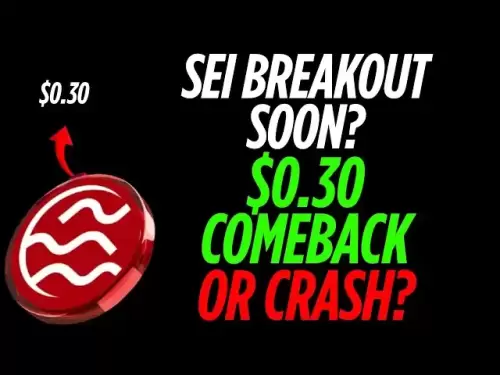-
 Bitcoin
Bitcoin $109,583.2239
0.19% -
 Ethereum
Ethereum $2,583.4612
0.48% -
 Tether USDt
Tether USDt $1.0003
-0.04% -
 XRP
XRP $2.2681
0.70% -
 BNB
BNB $659.9218
-0.52% -
 Solana
Solana $151.4961
-0.37% -
 USDC
USDC $0.9999
-0.02% -
 TRON
TRON $0.2861
1.20% -
 Dogecoin
Dogecoin $0.1718
0.04% -
 Cardano
Cardano $0.5960
-0.07% -
 Hyperliquid
Hyperliquid $40.1233
2.85% -
 Sui
Sui $2.9974
2.48% -
 Bitcoin Cash
Bitcoin Cash $497.1279
-1.76% -
 Chainlink
Chainlink $13.7275
-0.22% -
 UNUS SED LEO
UNUS SED LEO $9.0241
0.70% -
 Avalanche
Avalanche $18.5536
-0.88% -
 Stellar
Stellar $0.2421
1.39% -
 Toncoin
Toncoin $2.8593
-0.51% -
 Shiba Inu
Shiba Inu $0.0...01187
-0.07% -
 Litecoin
Litecoin $90.0023
2.90% -
 Hedera
Hedera $0.1590
2.79% -
 Monero
Monero $322.1495
0.00% -
 Polkadot
Polkadot $3.5453
-1.00% -
 Dai
Dai $1.0000
-0.01% -
 Bitget Token
Bitget Token $4.5733
-1.06% -
 Ethena USDe
Ethena USDe $1.0002
-0.01% -
 Uniswap
Uniswap $7.6345
3.03% -
 Aave
Aave $279.2583
0.47% -
 Pepe
Pepe $0.0...01003
-1.52% -
 Pi
Pi $0.4941
-0.32%
How do I stake my tokens in Ledger Live?
Staking tokens in Ledger Live is easy: connect your device, add tokens, and stake through the "Earn" tab to earn rewards securely.
Apr 09, 2025 at 06:00 pm
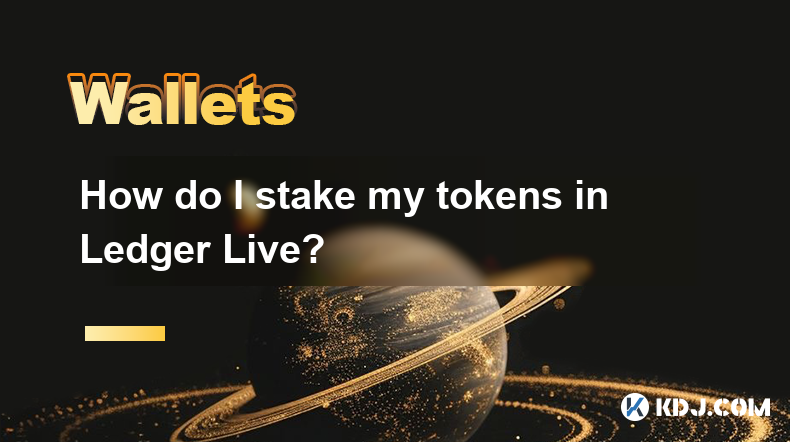
Staking your tokens in Ledger Live is a straightforward process that allows you to earn rewards on your cryptocurrency holdings securely. This guide will walk you through the steps to stake your tokens using Ledger Live, ensuring you can maximize your returns while keeping your assets safe.
Understanding Staking in Ledger Live
Staking is the process of holding funds in a cryptocurrency wallet to support the operations of a blockchain network. In return, you receive rewards, typically in the form of additional tokens. Ledger Live supports staking for several cryptocurrencies, including Tezos (XTZ), Tron (TRX), and Cosmos (ATOM). By staking through Ledger Live, you can keep your private keys secure on your Ledger hardware wallet while participating in the staking process.
Preparing Your Ledger Device
Before you can stake your tokens, you need to ensure your Ledger device is set up correctly. Here are the steps to prepare your device:
- Connect your Ledger device to your computer using the provided USB cable.
- Unlock your device by entering your PIN.
- Open the Ledger Live application on your computer.
- Ensure your device is running the latest firmware. You can check for updates in the "Manager" section of Ledger Live.
Adding Your Staking Tokens to Ledger Live
To stake your tokens, you first need to add them to your Ledger Live account. Follow these steps:
- Navigate to the "Receive" tab in Ledger Live.
- Select the cryptocurrency you want to stake from the list of supported assets.
- Generate a new address by clicking on "Continue" and then "Verify address" on your Ledger device.
- Transfer your tokens to the newly generated address. Wait for the transaction to be confirmed on the blockchain.
Setting Up Staking in Ledger Live
Once your tokens are in your Ledger Live account, you can set up staking. Here's how to do it:
- Go to the "Earn" tab in Ledger Live.
- Select the cryptocurrency you want to stake from the list of available options.
- Click on "Stake" to start the staking process.
- Choose a validator from the list provided. Validators are responsible for adding new transactions to the blockchain and maintaining its integrity.
- Enter the amount of tokens you want to stake. You can stake all or a portion of your holdings.
- Review the staking details and confirm the transaction on your Ledger device.
Managing Your Staked Tokens
After you've staked your tokens, you can manage them directly from Ledger Live. Here are some key points to keep in mind:
- Monitor your staking rewards in the "Earn" tab. Ledger Live will display your current rewards and any pending rewards.
- Adjust your staked amount if needed. You can add more tokens to your stake or unstake some of your tokens, depending on the rules of the specific cryptocurrency.
- Keep your Ledger device secure. Always ensure your device is locked when not in use and never share your recovery phrase with anyone.
Unstaking Your Tokens
If you decide to unstake your tokens, the process is relatively simple but may take some time depending on the cryptocurrency's rules. Here's how to unstake:
- Go to the "Earn" tab in Ledger Live.
- Select the cryptocurrency you have staked.
- Click on "Unstake" and enter the amount of tokens you want to unstake.
- Confirm the transaction on your Ledger device. Note that unstaking may involve a waiting period before you can access your tokens again.
Frequently Asked Questions
Q: Can I stake multiple cryptocurrencies at the same time in Ledger Live?
A: Yes, you can stake multiple cryptocurrencies simultaneously in Ledger Live, as long as they are supported by the platform. Each cryptocurrency will have its own staking process and rewards, which you can manage separately within the "Earn" tab.
Q: What happens if my Ledger device is lost or stolen while my tokens are staked?
A: If your Ledger device is lost or stolen, your staked tokens remain secure as long as your recovery phrase is not compromised. You can restore your Ledger Live account on a new device using your recovery phrase and continue managing your staked tokens.
Q: Are there any fees associated with staking in Ledger Live?
A: Staking through Ledger Live may involve network fees for transactions, such as when you initially stake your tokens or when you unstake them. Additionally, some cryptocurrencies may have validator fees, which are typically a percentage of your staking rewards. Always review the fee structure before staking.
Q: How often are staking rewards distributed in Ledger Live?
A: The frequency of staking reward distribution varies depending on the cryptocurrency. Some cryptocurrencies distribute rewards daily, while others may do so weekly or monthly. You can check the specific reward distribution schedule for each cryptocurrency in the "Earn" tab of Ledger Live.
Disclaimer:info@kdj.com
The information provided is not trading advice. kdj.com does not assume any responsibility for any investments made based on the information provided in this article. Cryptocurrencies are highly volatile and it is highly recommended that you invest with caution after thorough research!
If you believe that the content used on this website infringes your copyright, please contact us immediately (info@kdj.com) and we will delete it promptly.
- Coinbase, Wormhole, and the Crypto Exchange Evolution: What's the Deal?
- 2025-07-04 06:50:12
- Solana Price Analysis: Navigating Institutional Demand and Market Crossroads
- 2025-07-04 07:15:13
- Arctic Pablo Coin: The Meme Coin Melting Faces in 2025
- 2025-07-04 07:15:13
- Dogwifhat (WIF) Price Surge: Meme Coin Mania or Something More?
- 2025-07-04 06:30:13
- Shiba Inu Killers and Crypto Coin Myths: Navigating the Investment Landscape in 2025
- 2025-07-04 07:30:13
- Meme Coin Mania: Why Alpha Groups and Investment Radars Are Eyeing LILPEPE
- 2025-07-04 07:30:13
Related knowledge
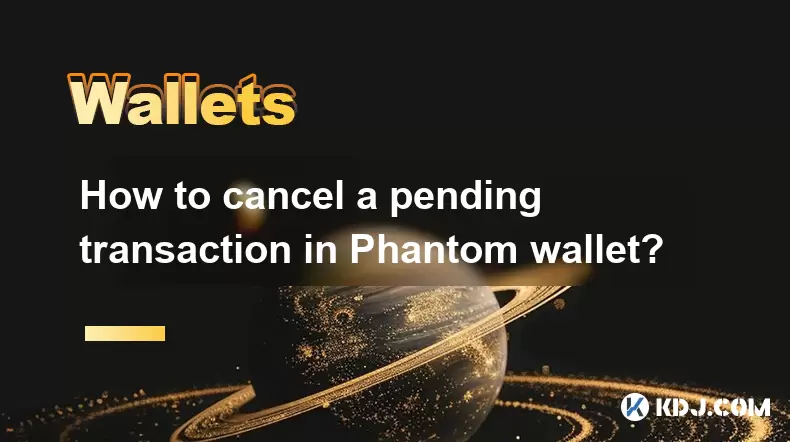
How to cancel a pending transaction in Phantom wallet?
Jul 03,2025 at 07:21pm
Understanding Pending Transactions in Phantom WalletA pending transaction in the Phantom wallet occurs when a user initiates a transfer or interaction with the Solana blockchain, but it hasn't yet been confirmed by the network. This can happen due to various reasons such as low transaction fees, network congestion, or incorrect gas settings. It's import...
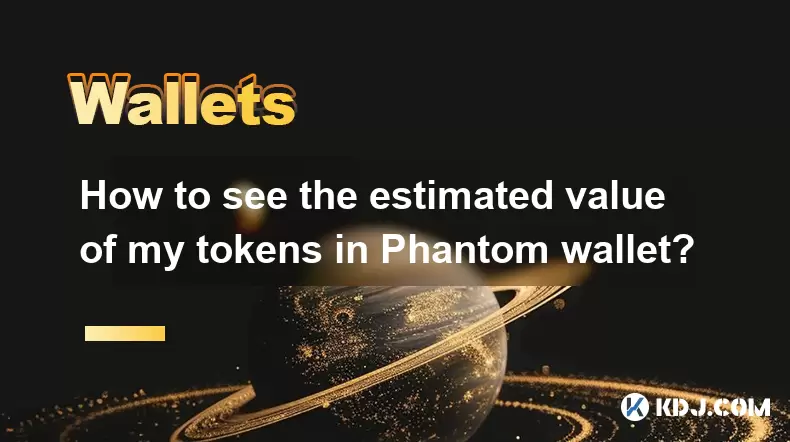
How to see the estimated value of my tokens in Phantom wallet?
Jul 04,2025 at 12:21am
What is Phantom Wallet?Phantom wallet is one of the most popular cryptocurrency wallets designed for the Solana blockchain. It allows users to store, send, receive, and manage various tokens built on Solana, including SPL tokens and NFTs. The wallet offers a user-friendly interface, making it accessible for both beginners and advanced users in the crypt...
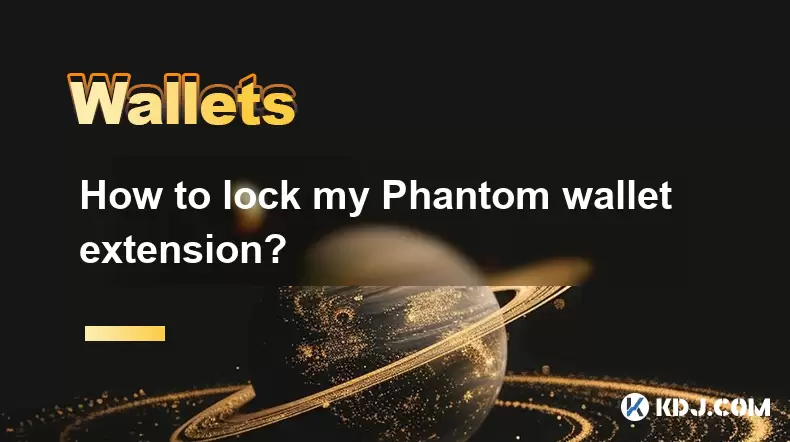
How to lock my Phantom wallet extension?
Jul 03,2025 at 11:14am
What Is the Phantom Wallet and Why Lock It?The Phantom wallet is a popular non-custodial cryptocurrency wallet designed for interacting with the Solana blockchain. Supporting both browser extensions and mobile apps, Phantom allows users to store, send, receive, and stake SOL tokens, as well as interact with decentralized applications (dApps). Securing y...

Does Phantom wallet offer two-factor authentication (2FA)?
Jul 03,2025 at 09:00am
Understanding Phantom Wallet and Its Security FeaturesPhantom wallet is a widely used non-custodial cryptocurrency wallet that supports the Solana blockchain. It allows users to store, send, receive, and interact with decentralized applications (dApps) seamlessly. As security is a top priority for any crypto wallet user, security features like two-facto...

What is "rent" on Solana and how does it affect my Phantom wallet?
Jul 02,2025 at 08:35pm
Understanding 'Rent' on SolanaIn the context of Solana, the term 'rent' refers to a storage fee that users pay for maintaining data on the blockchain. Unlike Ethereum, where storage costs are paid once via gas fees during contract deployment, Solana implements a recurring cost model to ensure efficient usage of network resources. This means that any acc...
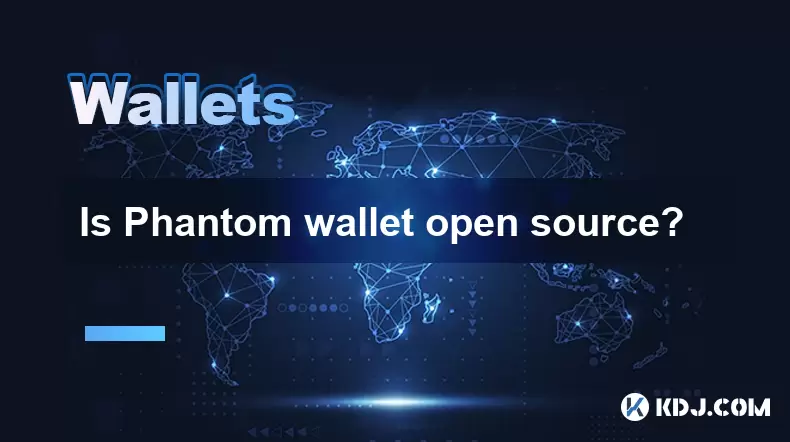
Is Phantom wallet open source?
Jul 03,2025 at 12:29am
What is Phantom Wallet?Phantom wallet is a non-custodial cryptocurrency wallet primarily designed for the Solana blockchain. It allows users to store, send, receive, and interact with decentralized applications (dApps) on the Solana network. The wallet is available as a browser extension and mobile application, offering a seamless experience for both be...

How to cancel a pending transaction in Phantom wallet?
Jul 03,2025 at 07:21pm
Understanding Pending Transactions in Phantom WalletA pending transaction in the Phantom wallet occurs when a user initiates a transfer or interaction with the Solana blockchain, but it hasn't yet been confirmed by the network. This can happen due to various reasons such as low transaction fees, network congestion, or incorrect gas settings. It's import...

How to see the estimated value of my tokens in Phantom wallet?
Jul 04,2025 at 12:21am
What is Phantom Wallet?Phantom wallet is one of the most popular cryptocurrency wallets designed for the Solana blockchain. It allows users to store, send, receive, and manage various tokens built on Solana, including SPL tokens and NFTs. The wallet offers a user-friendly interface, making it accessible for both beginners and advanced users in the crypt...

How to lock my Phantom wallet extension?
Jul 03,2025 at 11:14am
What Is the Phantom Wallet and Why Lock It?The Phantom wallet is a popular non-custodial cryptocurrency wallet designed for interacting with the Solana blockchain. Supporting both browser extensions and mobile apps, Phantom allows users to store, send, receive, and stake SOL tokens, as well as interact with decentralized applications (dApps). Securing y...

Does Phantom wallet offer two-factor authentication (2FA)?
Jul 03,2025 at 09:00am
Understanding Phantom Wallet and Its Security FeaturesPhantom wallet is a widely used non-custodial cryptocurrency wallet that supports the Solana blockchain. It allows users to store, send, receive, and interact with decentralized applications (dApps) seamlessly. As security is a top priority for any crypto wallet user, security features like two-facto...

What is "rent" on Solana and how does it affect my Phantom wallet?
Jul 02,2025 at 08:35pm
Understanding 'Rent' on SolanaIn the context of Solana, the term 'rent' refers to a storage fee that users pay for maintaining data on the blockchain. Unlike Ethereum, where storage costs are paid once via gas fees during contract deployment, Solana implements a recurring cost model to ensure efficient usage of network resources. This means that any acc...

Is Phantom wallet open source?
Jul 03,2025 at 12:29am
What is Phantom Wallet?Phantom wallet is a non-custodial cryptocurrency wallet primarily designed for the Solana blockchain. It allows users to store, send, receive, and interact with decentralized applications (dApps) on the Solana network. The wallet is available as a browser extension and mobile application, offering a seamless experience for both be...
See all articles























